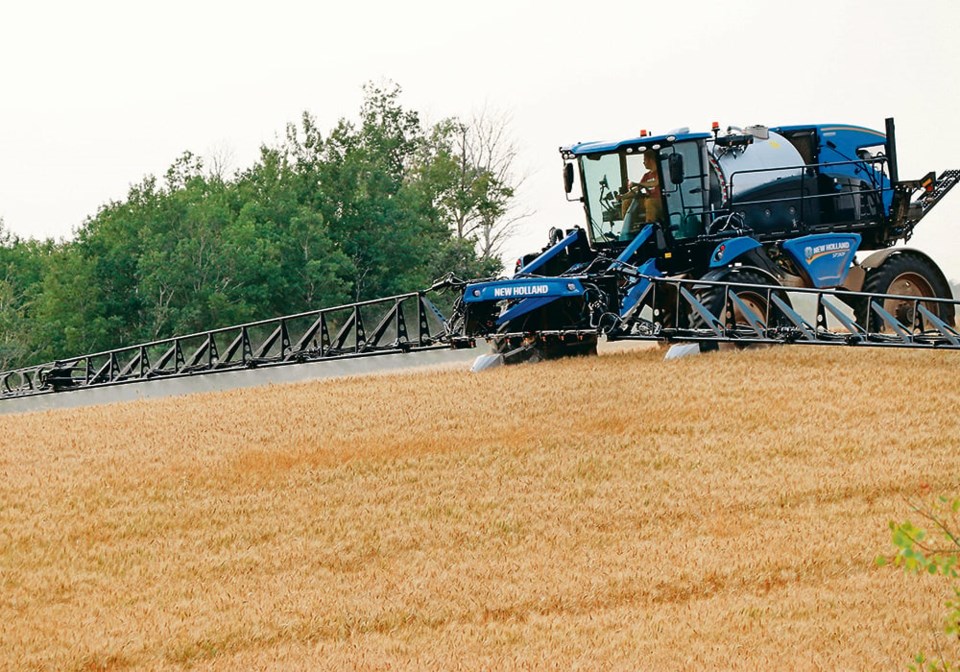WESTERN PRODUCER — Images of autonomous machines working on their own in fields can easily grab the attention of early-adopter producers, especially those facing a labour crunch.
They also make impressive headlines and brand announcements.
However, even though several concept, prototype and even a few production machines have appeared on the scene, nearly all producers will again still be sitting in their tractor cabs to get next spring’s crop in the ground.
There seems to be unanimous agreement among executives at major brands that there is still a lot of work to do before most farmers can think of spending all their days in the farm office rather than the cab.
During an Ag Equipment Intelligence 2024 Executive briefing webinar in December, senior executives from four major companies discussed their views on automation and autonomy. Most agree that the road to full autonomy will first involve gradually automating all the processes farm machines do while keeping an operator in most cabs for the time being.
“We talk about full autonomy so much and so fluently, but the automation of (individual) processes is building blocks along the way until it’s really the whole moon shot,” said Kurt Coffey, Case IH’s vice-president for North America.
“I know there are generations coming in machine operation and scale that require full autonomy — if not full autonomy, then leader-follower, one machine (being operated by a person) and three following,” he said.
“To me it’s going to be a race to integrate sophisticated tech into existing platforms.”
Agco’s Brad Arnold, vice-president for Massey Ferguson in North America, agreed. He said that for his company, one of the main efforts now is to provide retrofit solutions that allow producers to incorporate technology and automation into late-model machines.
“With the acquisition of Precision Planting six years ago, we really brought on this retrofit first mindset,” he said.
“We added Headsight so we had some automation for combines and the capability to further automate combines from a retrofit perspective. Appareo similarly addresses the retrofit opportunity with seeders, sprayers, spreaders, and JCA with the tech stack for autonomy.
“We’re excited to take a full automation to autonomy approach from a retrofit perspective as we bring all of these technologies together, and once we close on the Trimble JV (joint venture) to start to bring that technology into the portfolio as well.”
In November Agco announced it had entered into a “transformational joint venture with Trimble, which creates an industry leading global mixed-fleet precision ag platform.”
Over at John Deere, there is a three-pronged focus on building out an offering of fully autonomous machines and improving production data quality and usability for producers.
“I look at our future and the trends, and there are three big buckets,” said Denver Caldwell, vice-president of sales for Canada and the United States.
“They’re the pillars of our multi-year, multi-cycle strategy, first of which is automation to autonomy. There are things we can do to automate certain functions along the way to (full autonomy) to make our producers’ lives easier.
“We’ve come a long way since our first release of an (autonomous) tillage tractor in 2022, and we’ll keep going down that path to autonomy. We’ll be using automation and autonomy prep packages to get there.
“The second is anywhere management, using the John Deere Operations Centre and having data at hand. Whether it’s autonomy, logistics or implement (data), we have to be able to enable that on a broader scale. (Customers) are telling us it’s not just about the people in the field, it’s also about the people in the office and the people supporting the entire operation. They need that capability around anywhere management.
“The third pillar is insights to intelligence. How do we take all these ‘whats’ and distill them down to a ‘so what?’ Is it a difference that makes a difference in their lives? And if it is, what do I do about it? If we can do a better job on this, on the analytics so people can do a better job, that’s insights to intelligence.
“Those are the things we’ll continue to invest in as we deliver on our smart industrial strategy.”
At Kubota, one of the company’s primary focuses will also be on automating processes toward full autonomy. President Todd Stucke said effort will go a long way toward improving the labour situation in both the agricultural and small construction sectors.
“If we can make an everyday operator as good as the best operator,” he said, “then we have a larger pool of labour. If we can automate tractors, we can solve some of the labour issues we have. It’s really making technology useful and integrating it into our equipment.”
All this technology isn’t just something brands want to build into machines. The demand for it is being driven by customers, according to John Schmeiser, chief operating officer and president of the North American Equipment Dealers Association, which represent ag equipment dealers across Canada and the U.S.
“It is our customers that are requesting these new efficiencies and sophistication,” he said.
The manufacturer executives agree that customer demand is what is driving the increasingly sophisticated solutions they are developing.
“One of the things we’ve been doing here at Grand Island, (Nebraska), is going deep with our customer panel on our automation features on combines,” Coffey said during the webinar.
“People are saying, ‘I’m buying that combine because it has 20 percent more efficiency in a varying field with an unskilled operator.’ We’ve made a lot of (tech) acquisitions in the last few years. It’s along the way to full autonomy. It exciting to see where we’re at and where we’re headed.”




